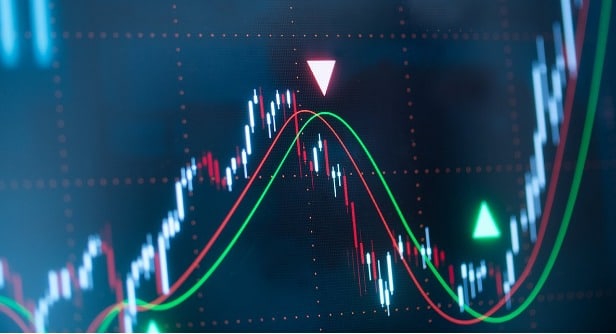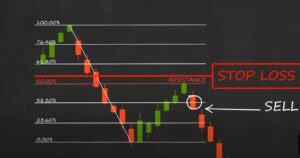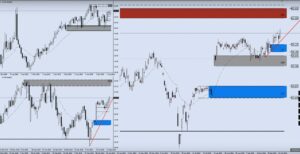In the dynamic world of forex trading, traders employ a myriad of technical indicators to analyze price movements and make informed decisions. One such indicator that plays a crucial role in smoothing out price data and identifying trends is the Centered Moving Average (CMA). In this comprehensive guide, we will delve into the intricacies of the Centered Moving Average, exploring its definition, calculation method, interpretation, and its application in the forex market.
What is the Centered Moving Average (CMA)?
The Centered Moving Average is a type of moving average that endeavors to reduce the lag associated with traditional moving averages. Unlike simple moving averages that consider only past data, the CMA takes into account both past and future data points, providing a more balanced view of price trends. This characteristic makes it particularly useful in identifying trends and potential reversal points.
Calculation Method of the Centered Moving Average
The calculation of the Centered Moving Average involves averaging the values of a data set with an odd number of observations. The central point is determined by finding the average of the data points on either side of the desired point. The formula for calculating the CMA is as follows:
This averaging method places more weight on the central data point, providing a smoother and less lagging indicator compared to other moving averages.
Interpreting the Centered Moving Average
Understanding the Centered Moving Average requires an appreciation of its ability to highlight trends and potential reversal points. Here are key points to consider when interpreting the CMA:
Smoothing Out Price Data:
One of the primary purposes of the CMA is to smooth out price data, making it easier for traders to identify trends amid market noise. The averaging process, with a focus on the central data point, reduces the impact of outliers and short-term fluctuations.
Identifying Trends:
The CMA is particularly effective in identifying trends, both upward and downward. When the CMA is sloping upwards, it suggests an uptrend, and conversely, a downward slope indicates a downtrend. Traders often use the crossover of the CMA with the price chart or other moving averages to confirm trend changes.
Potential Reversal Points:
The CMA’s consideration of future data points allows it to act as a leading indicator for potential trend reversals. Traders observe changes in the slope of the CMA to anticipate shifts in market sentiment and adjust their trading strategies accordingly.
Application of the Centered Moving Average in Forex Trading
Traders employ the Centered Moving Average in various ways to enhance their decision-making process. Here are some common applications in forex trading:
Trend Confirmation:
Traders use the CMA to confirm the direction of the trend identified through other technical analysis tools. For example, if a price chart indicates an uptrend and the CMA slopes upwards, it provides additional confirmation of the bullish trend.
Support and Resistance Levels:
The CMA is also used to identify potential support and resistance levels. Changes in the slope of the CMA around specific price levels can signal the strength or weakness of those levels, aiding traders in setting appropriate entry and exit points.
Crossover Strategies:
The crossover of the CMA with the price chart or other moving averages is a popular strategy. For instance, a bullish crossover, where the price moves above the CMA, can signal a buying opportunity, while a bearish crossover suggests a potential sell signal.
Divergence Analysis:
Traders often analyze divergences between the CMA and price movements. Divergences can indicate weakening trends or potential reversals, providing traders with valuable insights for adjusting their positions.
Limitations of the Centered Moving Average
While the Centered Moving Average offers several advantages, it is essential for traders to be aware of its limitations:
Sensitivity to Outliers:
The CMA, like other moving averages, can be sensitive to outliers or extreme values. A sudden and sharp price movement can have a significant impact on the CMA, potentially leading to false signals.
Delayed Reversal Signals:
While the CMA aims to provide more timely signals compared to traditional moving averages, it may still lag in identifying trend reversals, especially in rapidly changing market conditions.
Optimal Parameter Selection:
Choosing the appropriate number of periods for the CMA calculation is crucial. Different market conditions may require adjustments to the parameter, and there is no one-size-fits-all approach.
The Centered Moving Average is a valuable tool in a forex trader’s arsenal, offering a balance between smoothing out price data and providing timely trend signals. Traders can leverage the CMA in various ways, from trend confirmation to identifying potential reversal points. However, it is essential to acknowledge its limitations and use it in conjunction with other technical analysis tools for a comprehensive approach to trading.
As with any technical indicator, traders should practice prudent risk management and continuously adapt their strategies to evolving market conditions. The Centered Moving Average, when used judiciously, can be a powerful ally in navigating the complexities of the forex market.
Let’s Manage Your Forex Funds With Fx Pips Guru!
Fx Pips Guru is a forex fund management company managing client’s funds profitably. We work with prop firms as well to pass the challenges and to manage the funds following consistency and profitability. Let’s do Live Chat with our experts.




